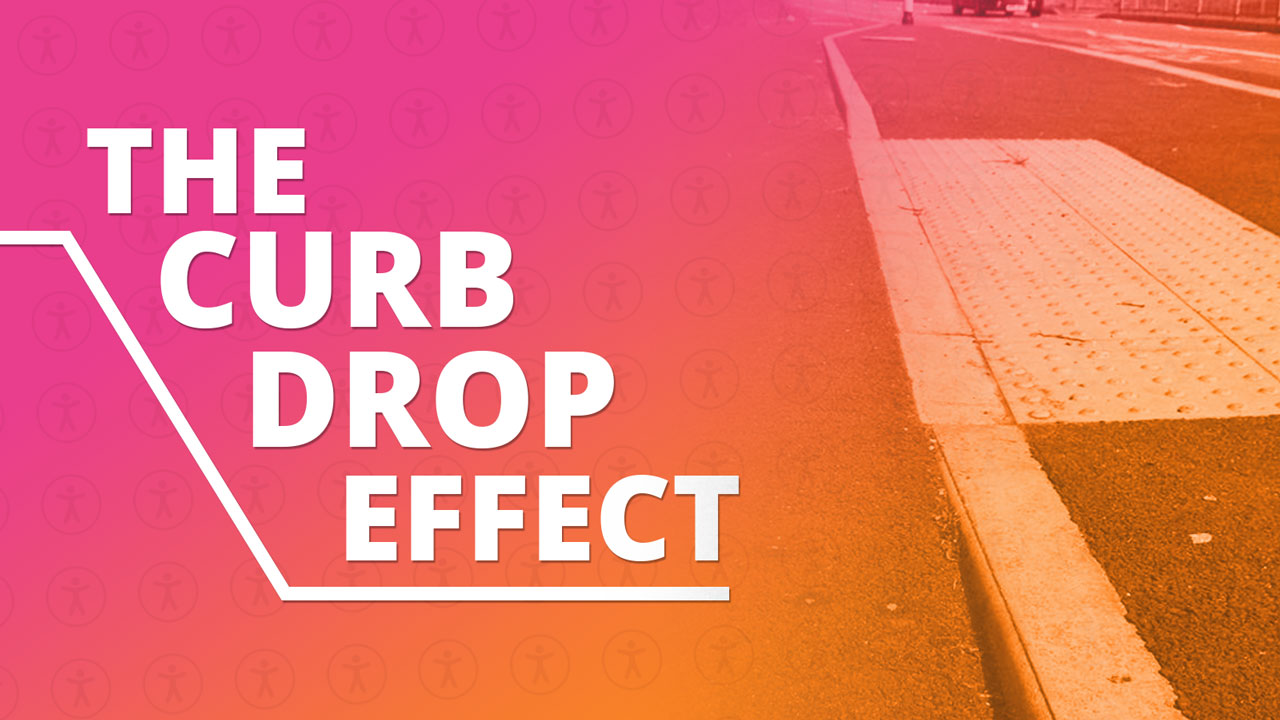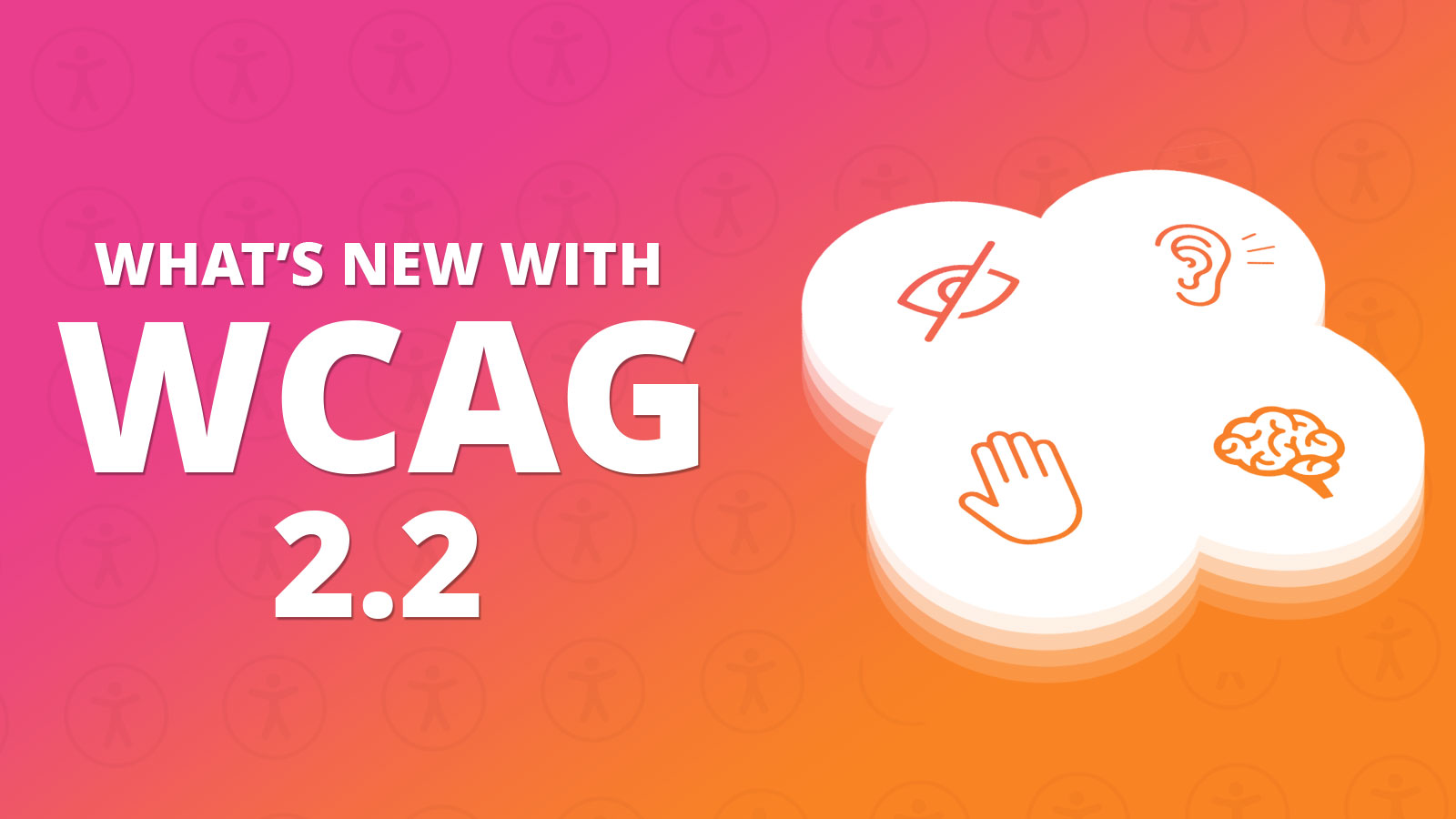Blog
CATEGORY: Accessibility
Improved accessibility is better for everyone

The Curb-cut/curb-drop effect refers to the idea that designing for accessibility for people with disabilities ultimately benefits everyone. The term originated from the design of curb drops, which were initially designed to help people in wheelchairs to access pavements, but are now used by people with strollers, bikes, and luggage.
In today's society, accessibility goes beyond just pavements and physical structures, as we spend a significant amount of time online and using digital devices. The concept has expanded to include not only physical environments, but also digital spaces, such as websites, apps, and emails. By creating inclusive designs, businesses and organisations can reach a wider audience and improve the user experience for everyone.
Universal design, which is the design of buildings, products or environments to make them accessible to people of all abilities and ages, is the foundation of the curb drop effect. It addresses common barriers to participation by creating things that can be used by the maximum number of people possible. Universal design emerged from earlier barrier-free concepts, the broader accessibility movement, and adaptive and assistive technology, and seeks to blend aesthetics into these core considerations. Although universal design does not address every need for every person in every situation, it is a step towards creating more accessible environments and products.
The curb drop effect can be observed in digital products and services, such as websites and apps. For example, if the text has a good colour contrast and a readable font size, it can be read well even while sitting in a bus on a bumpy road. Websites with simple and consistent layouts allow users to accomplish tasks quickly and without confusion. When content has an organized structure, it can be understood more easily. Action buttons with descriptions and the ability to pause or disable autoplay in social feeds make the user experience more enjoyable. Enabling captioning allows users to watch videos in noisy environments and learn new languages.
Designing for accessibility not only benefits people with disabilities, but also brings benefits to all users. For instance, video captions that help people with hearing difficulties also help people who are watching the video on mute, such as in a social media feed. Legible, high-contrast text that helps people with vision difficulties also helps people with perfect eyesight who are using the app outdoors in bright sunlight. When designers create products and services that are accessible to people of all abilities, they can create products that anyone can use and enjoy.
One of the most important aspects of the curb-cut effect is its positive implications for society. By designing products, buildings, and environments that are accessible to everyone, we create a more inclusive society that values diversity and promotes equal opportunities. Accessible design benefits not only people with disabilities but also people who face challenging situations, such as those who are temporarily injured, carrying heavy loads, or pushing strollers.
Designing for accessibility also makes sense on a practical level. For example, creating accessible emails allows organisations to reach a wider audience. There are currently around 3 billion email users worldwide, all with different abilities and challenges. Writing and visual design are key components of an accessible email campaign. By creating simpler, more subscriber-friendly emails, organisations can open up their content to a wider audience, while providing a better, more valuable experience for all their subscribers.
Creating an accessible email campaign does not require complex coding techniques. By using simple, well-established principles and basic HTML, organisations can create email campaigns that can be accessed from a variety of devices and assistive technologies. Simple changes, such as using alt tags for images, adding descriptive text to links, and using semantic HTML, can make a big difference in creating an accessible email campaign.
The curb-cut effect is a powerful concept that highlights the importance of accessible design in creating inclusive societies. Universal design aims to create products, buildings, and environments that are accessible to everyone, regardless of age, disability, or other factors. While universal design does not address every access need, it can benefit everyone by providing features that make tasks easier to accomplish.
Creating accessible digital products and services, including email campaigns, can bring significant benefits, such as improved SEO, increased market share, and enhanced public image for brands.
Ultimately, designing for accessibility is not only the right thing to do, but it is also good for society, the economy, and business.
Download our free email accessibility checklistSolutions
Email marketing healthcheck
We are confident that we can help you, which is why we offer a free healthcheck to identify potential issues with your current programme and free advice on things that could be done to improve it.


